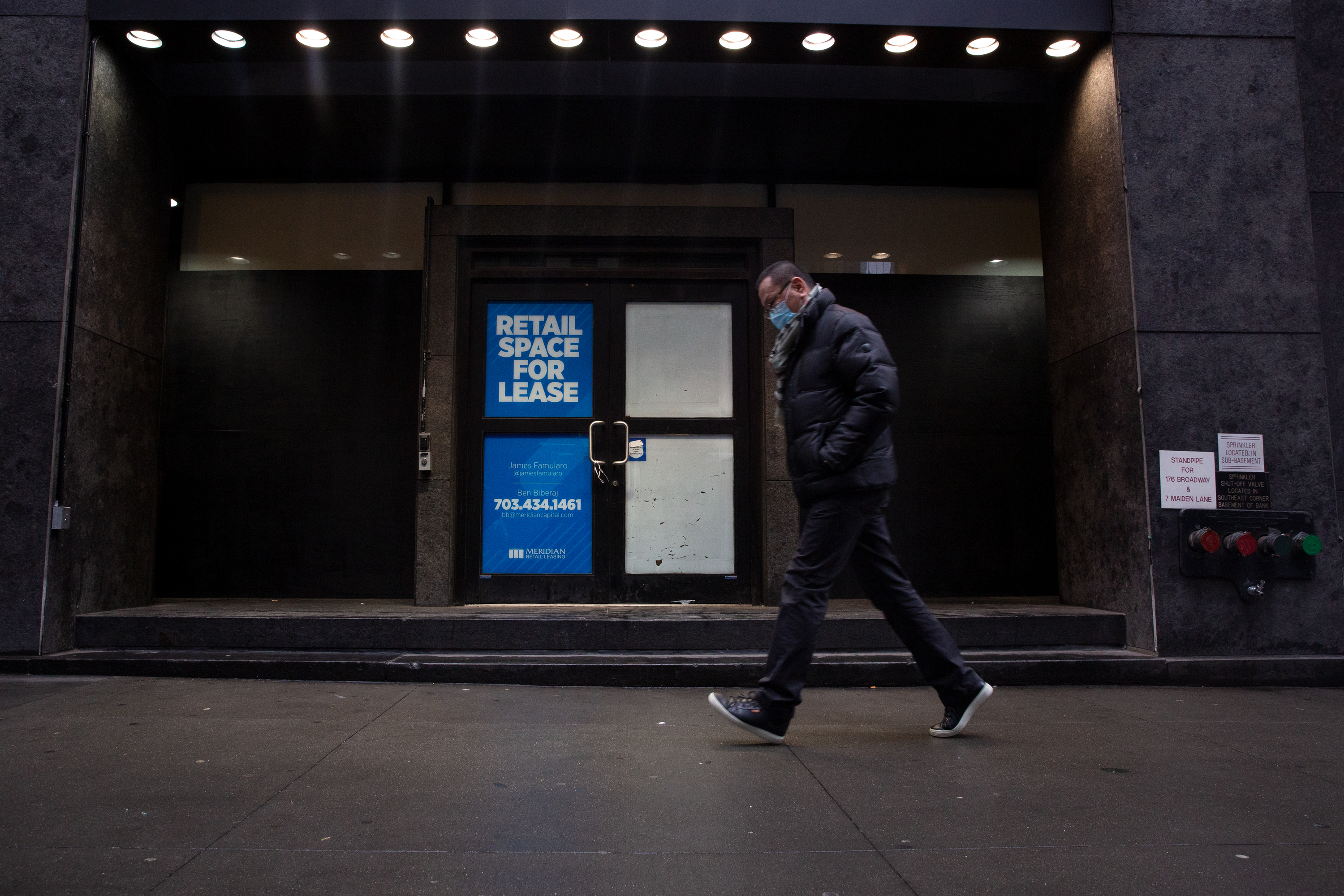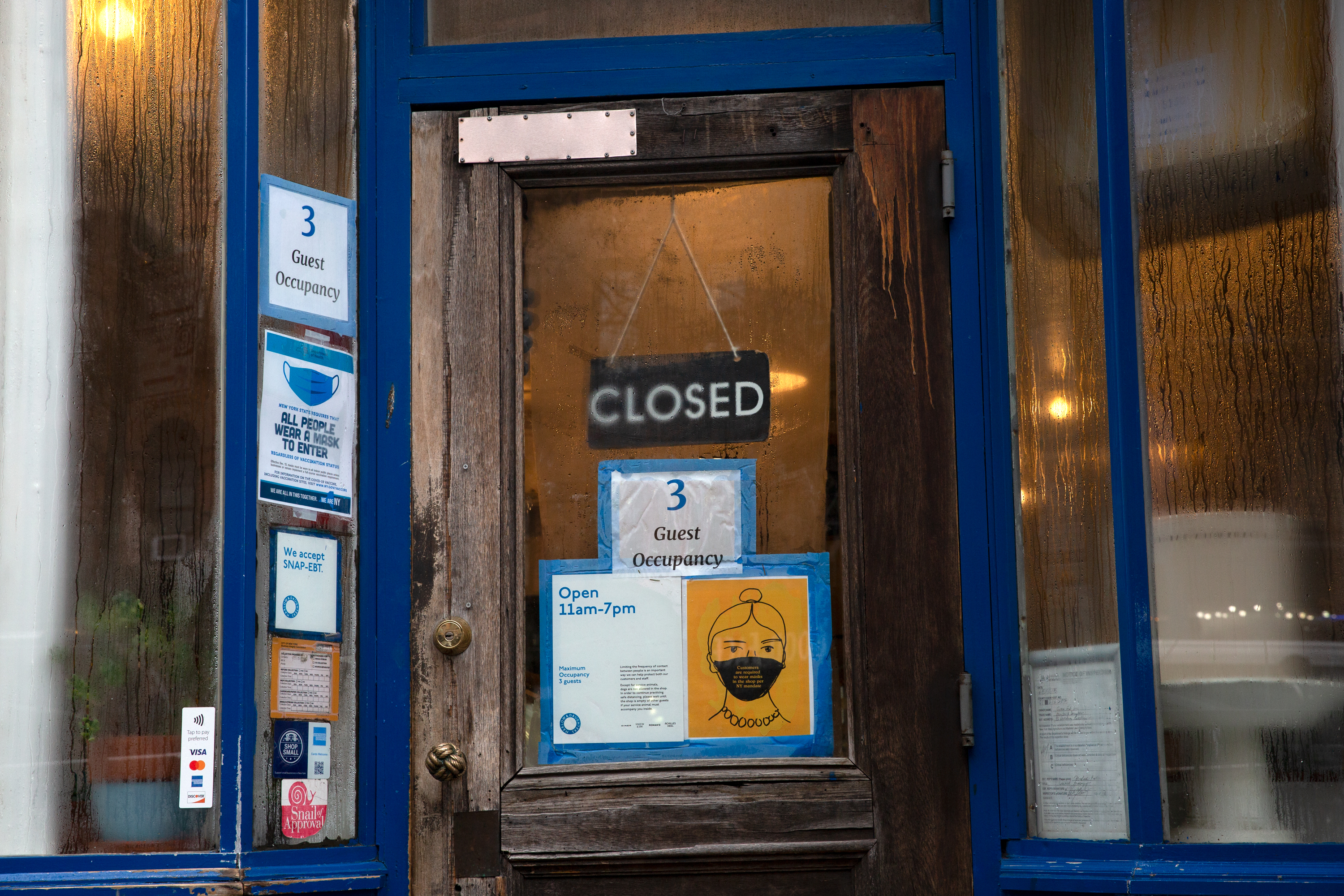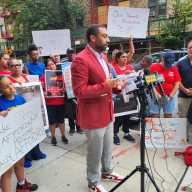This article was originally published on by THE CITY
As the omicron variant swept New York City in December, businesses in Brooklyn immediately felt the impact.
Three out of four saw their holiday sales plunge, almost two-thirds reported employees calling in sick and one in five closed for at least some days over the holidays, a survey by the Brooklyn Chamber of Commerce found.
This week, the economy in Manhattan took the hit: Goldman Sachs joined JPMorgan Chase, Citigroup, Bank of America, Wells Fargo and Morgan Stanley in telling employees to stay home rather than return to the office after the holidays. The island’s business districts are again very quiet.
The outlook for the whole city’s economy in 2022 depends on whether the blow from omicron will be temporary and whether the city’s fundamental strengths — especially in finance and tech as well as the boost coming from the federal infrastructure bill — will power a recovery later in the year.
Certainly new Mayor Eric Adams understands what is at stake. Repeatedly this week he has castigated the CEOs of the city’s biggest banks for putting fears about omicron ahead of the financial needs of the city.
“You can’t run New York City from home,” he said. “We must have everyone participate in our financial ecosystem to allow the low-skill, unskilled and people who are hourly employees to actually be part of our ecosystem. They can’t remotely do their job.”
New York City was hit harder by the pandemic shutdown in 2020 than virtually any other major city, losing more than 900,000 jobs or about 20% of the total in just two months.
Since then, the recovery has been anemic, with the city’s 9% unemployment rate almost twice that of the nation.
The city remains some 350,000 jobs below the pre-pandemic peak — a loss of 9.6% of all jobs — while the nation is only 2.6% below that record, according to a new jobs tracker from the Federal Reserve Bank of New York.
“All bets are off for the short term,” said James Parrott, an economist at the New School who has been closely tracking the local economy. “It’s hard to get off the ground. Get on one knee, ready to stand up and get knocked down again.”
Delayed Recovery
On Tuesday the city’s Independent Budget Office sharply revised its economic projections downward. The IBO now estimates the city will add only 175,000 jobs this year and 100,000 in 2023, meaning it would not regain all the jobs lost in the pandemic until late 2025. In May, the office expected the jobs to be regained in 2024.

Memberships have dropped 40% at BYKLyn Pop-Up cycling studio since omicron began dominating the news despite the enormous efforts owner Amy Glosser has taken to make her members feel safe. At her Boerum Hill storefront, she keeps her double sliding glass doors and window open for ventilation, has reduced the class size to 16 from 25 and requires masks even though she doesn’t have to.
“As a small business we are just doing what we can to stay alive and make our community healthy.”
The reason for the city’s economic woes are clear to economists as well as Adams. The lack of tourists and office workers has devastated the three Rs — restaurants, retail and recreation — according to a report released Tuesday by state comptroller Thomas DiNapoli.
Restaurant employment remains 30% below its peak. Recreation is down 24% and retail 14%. Nationally these sectors are only 3% below their pre-pandemic record, according to the comptroller.

Before the pandemic, New York City attracted some 66 million visitors a year and tourism contributed about $80 billion a year to the city’s economy, accounting for more than 300,000 jobs. In 2020, the economic impact fell to only $20 billion.
Bets on a Better Future
Yet the desire to come to New York remains strong. Occupancy at city hotels topped 81% for the week that ended Dec. 11, the highest for any U.S. market tracked by the research firm STR, before sliding again as the omicron variant took hold.
And the need to bring employees back to the office remains just as strong, real estate executives insist, despite all the speculation that remote work will sharply reduce the demand for office towers.
Fisher Brothers real estate, for example, announced lease signings last month with four financial services firms that took 100,000 square feet at 299 Park Ave. Bloomberg News reported Tuesday that Morgan Stanley would take 400,000 square feet of space at the company’s tower at 55 East 52nd Street, also known as Park Avenue Plaza. It will replace the giant money manager BlackRock, which is moving west to Hudson Yards.
“I have not seen anyone who thinks that having an office presence and culture doesn’t make sense,” said Winston Fisher, the politically active partner at Fisher Brothers. “It’s about mentorship, community and culture.”
The rapidly expanding tech sector is playing a crucial role in filling vacant space.
Paul Myers, a vice chairman who represents tenants at the real estate firm CBRE, was trying to sublease a major space at 55 Water St. downtown when he got a call from a company called DailyPay that wanted to tour the space.
“I had never heard of them and had to look them up,” he recalled. The payment platform, which had been leasing 42,000 square feet, inked a deal to triple the space it would occupy.
CBRE reported Tuesday that 105 leases were signed last year with a per square foot price of more than $100, a sign that the most expensive office space remains in demand.
The tech and finance sectors sustained the local economy last year and could accelerate the recovery.
Venture capital firms poured $36 billion in New York City startups in the first nine months of last year, compared with $19 billion for all of 2020, sparking not only lease signings but a surge in jobs that pay well. The average pay in the information sector is about $167,000.
Wall Street Does Well
The IBO believes Wall Street ended 2021 with profits of $59 billion, the second highest year on record behind 2009, and bonuses are likely to average $210,000, topping a 2006 record by about $20,000. Wall Street’s gains are behind the surge in city income tax payments since the average pay now tops $400,000.
The $1.9 trillion infrastructure bill shepherded by President Joe Biden will also provide a boost. It’s already the source of money to restart work on a new terminal at John F. Kennedy airport, rebuild Penn Station and four new Metro-North train stops in the Bronx, and guarantee New York and New Jersey can proceed with the Gateway train tunnel under the Hudson.

If the omicron surge lasts longer than expected, the city’s economic woes will be exacerbated by the lack of government help. Parrott of the New School estimates that New Yorkers received $272 billion in federal aid from various relief measures since the start of the pandemic, but business assistance, expanded unemployment benefits and the child tax credit have all run out.
The state and city do have billions of dollars of unused federal relief aid — exact numbers are not available — which they could use for short-term economic help, Parrott argues. He advocates a wage subsidy program to keep people employed, especially in restaurants, hotels and similar businesses.
Deputy state comptroller Rahul Jain agrees that businesses in the 3 Rs should receive help and Gov. Kathy Hochul announced she would propose $100 million in new help for small businesses. Jain says given the haphazard way federal aid to business was delivered over the last two years, the state and city will have to make sure to target the neediest firms, especially in lower-income communities.
Meanwhile, business people like Glosser continue to persevere.
In the spring she plans to open the city’s first permanent outdoor cycling facility, at 309 Bergen St. It will have an indoor section with showers, leading to an outdoor deck for the bikes.
“We are hoping omicron leaves as fast as it arrives,” she said. “In the meantime, as a small business we continue to pivot.”
THE CITY is an independent, nonprofit news outlet dedicated to hard-hitting reporting that serves the people of New York.

















